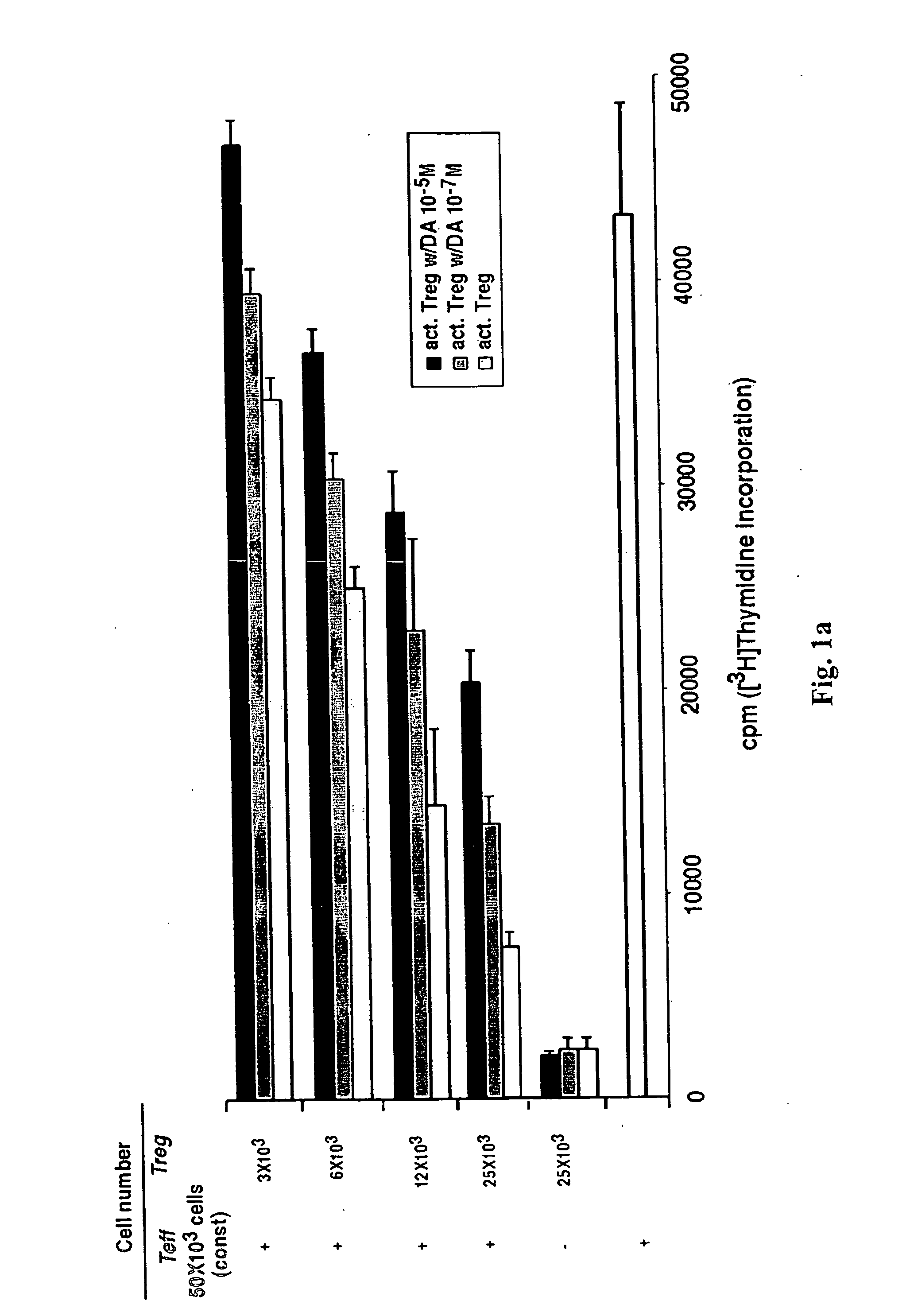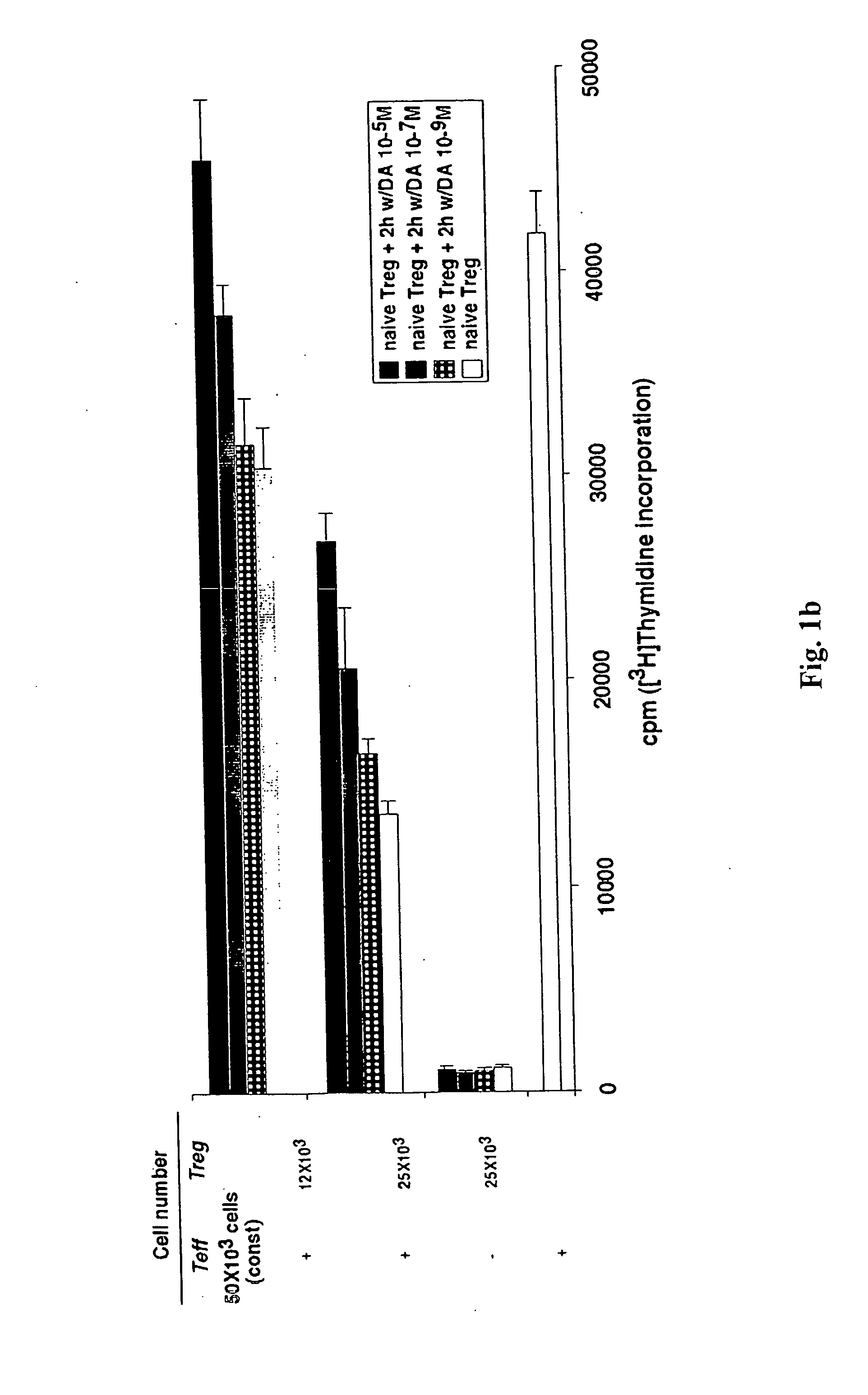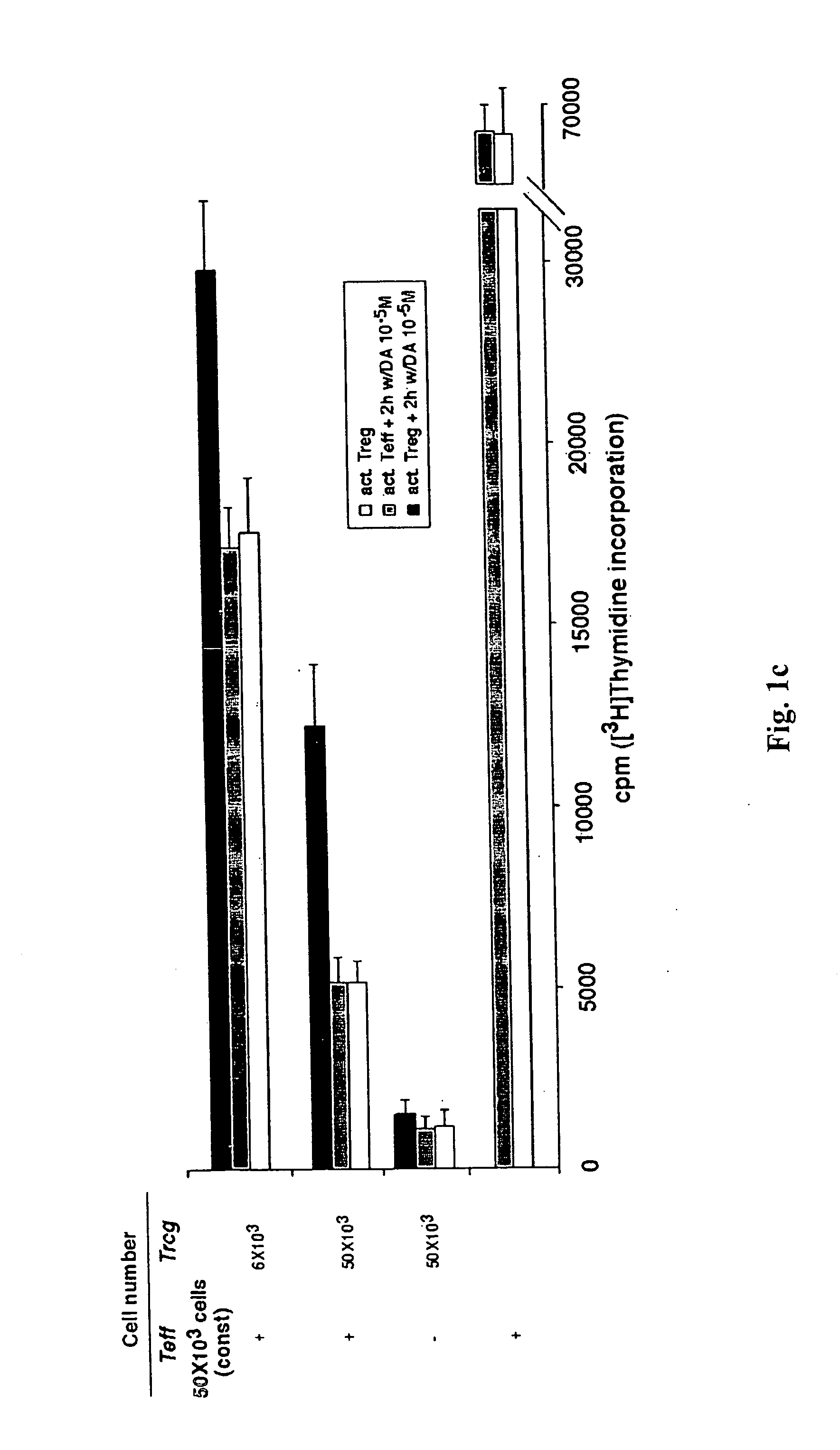Dopamine and agonists and antagonists thereof for modulation of suppressive activity of CD4+CD25+ regulatory T cells
- Summary
- Abstract
- Description
- Claims
- Application Information
AI Technical Summary
Benefits of technology
Problems solved by technology
Method used
Image
Examples
example 1
Dopamine Reduces the Suppression Imposed by Treg
[0105]In this experiment, we examined whether dopamine acts on Treg and alters their suppressive effect on Teff. Suppression of proliferation of Teff, assayed by [3H]thymidine incorporation, was used as a measure of suppressive effect of Treg (Thornton and Shevach, 1998).
[0106]Co-culturing of Teff with Treg isolated from naïve mice results in suppression of Teff proliferation. The suppressive potency depends on the Treg / Teff ratio and the state of Treg activation; the suppression is significantly increased, for example, if the Treg are activated before being added to Teff (Thornton and
[0107]Shevach, 1998, 2000). Inhibition of Treg proliferation, assayed by [3H]thymidine incorporation, can therefore be taken as a measure of the suppressive effect. We examined the ability of major neurotransmitters and neuropeptides (dopamine, norepinephrine, substance P, and serotonin) to alleviate the Treg-induced suppression of Teff in vitro. Each com...
example 2
The Effect of Dopamine on Treg is Exerted Via Type-1 Family of Dopamine Receptors (D1-R)
[0111]To establish whether the observed effect of dopamine on Treg is exerted through a receptor-mediated pathway, we employed specific agonists and antagonists of dopamine receptors. Incubation of Treg with 10−5 M SKF-38393, an agonist of the type-1 family of dopamine receptors (consisting of D1-R and D5-R), reproduced the dopamine effect (FIG. 2a). The specific D1-type antagonist SCH-23390 (10−5M), when added together with dopamine (10−5M), prevented the dopamine effect, further substantiating the contention that the effect of dopamine on Treg is mediated through the type-1 receptor family. Also in line with this contention was the finding that incubation of Treg with 10−5 M quinpirole, an agonist of the type-2 family of dopamine receptors (comprising D2-R, D3-R, and D4-R), had no effect on the suppressive activity of Treg. However, clozapine, an antagonist of D2-R, enhanced the dopamine-induce...
example 3
Dopamine does not Cause Treg Apoptosis
[0112]To exclude the possibility that dopamine exerts its effect by causing the death of Treg, we examined whether dopamine at the concentrations used here cause Treg apoptosis. No signs of apoptosis were detectable in Treg, which, after being incubated with dopamine, were stained with propidium iodide and analyzed for apoptotic cells (sub-G1) by flow cytometry (FIG. 2b). To further verify the absence of apoptotic death in Treg, after incubating Treg with dopamine we stained them for phosphatidylserine with annexin V. Again, we could not detect any signs of apoptosis in Treg beyond the background levels seen in the absence of dopamine
[0113](FIG. 2c). Thus, the reduction in Treg activity after their encounter with dopamine or a related agonist, evidently results not from the death of Treg, but rather from alteration of their behavior.
PUM
 Login to View More
Login to View More Abstract
Description
Claims
Application Information
 Login to View More
Login to View More - R&D
- Intellectual Property
- Life Sciences
- Materials
- Tech Scout
- Unparalleled Data Quality
- Higher Quality Content
- 60% Fewer Hallucinations
Browse by: Latest US Patents, China's latest patents, Technical Efficacy Thesaurus, Application Domain, Technology Topic, Popular Technical Reports.
© 2025 PatSnap. All rights reserved.Legal|Privacy policy|Modern Slavery Act Transparency Statement|Sitemap|About US| Contact US: help@patsnap.com



